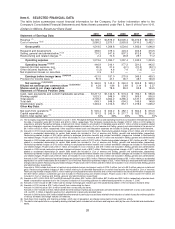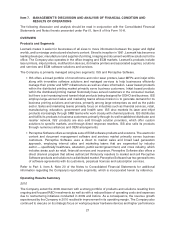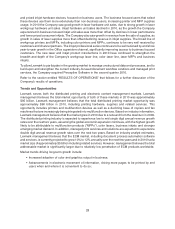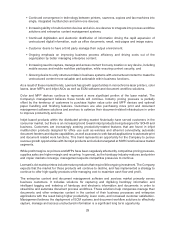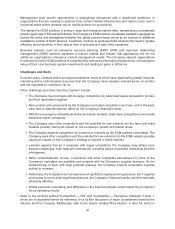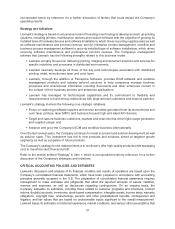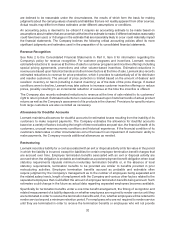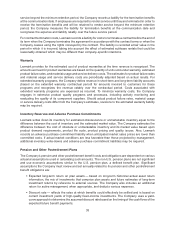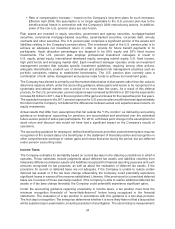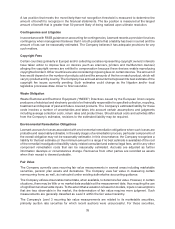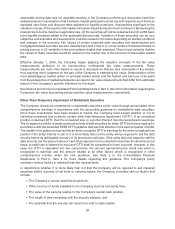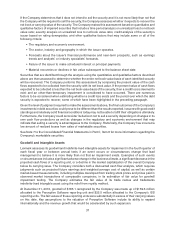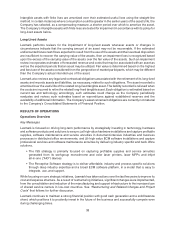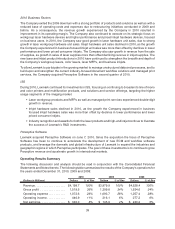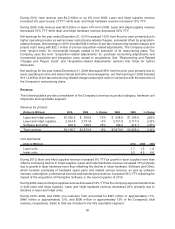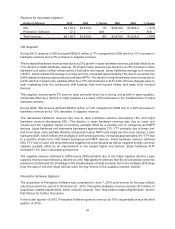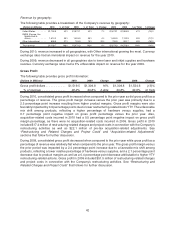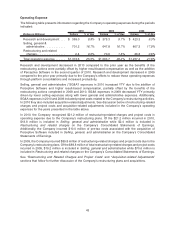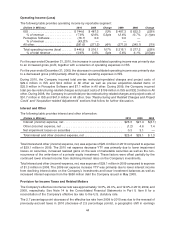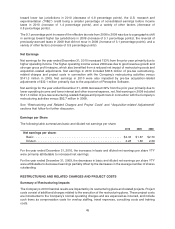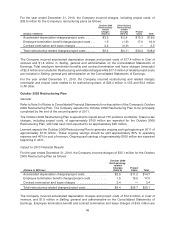Lexmark 2010 Annual Report Download - page 42
Download and view the complete annual report
Please find page 42 of the 2010 Lexmark annual report below. You can navigate through the pages in the report by either clicking on the pages listed below, or by using the keyword search tool below to find specific information within the annual report.observable pricing data was not available resulting in the Company performing a discounted cash flow
analysis based on assumptions that it believes market participants would use with regard to such items as
expected cash flows and discount rates adjusted for liquidity premiums. Assumptions significant to the
valuation include (1) the auction rate market will remain illiquid and auctions will continue to fail causing the
interest rate to be the maximum applicable rate, (2) the securities will not be redeemed and (3) a 250 basis
point liquidity premium added to the applicable discount rate. Valuation of these securities can be very
subjective and estimates and assumptions could be revised in the future depending on market conditions
and changes in the economy. Fair values of certain corporate debt securities and asset-backed and
mortgaged-backed securities are also classified as Level 3 due to (1) a low number of observed trades or
pricing sources or (2) variability in the pricing data is higher than expected. There is less certainty that the
fair values of these securities would be realized in the market due to the low level of observable market
data.
Effective January 1, 2009, the Company began applying the valuation concepts of the fair value
measurements guidance to its nonrecurring, nonfinancial fair value measurements. These
measurements are most often based on inputs or assumptions that are less observable in the market,
thus requiring more judgment on the part of the Company in estimating fair value. Determination of the
most advantageous market (when no principal market exists) and the highest and best use of an asset
from the perspective of market participants can result in fair value measurements that differ from estimates
based on the Company’s specific intentions for the asset.
See Notes 2 and 3 to the Consolidated Financial Statements in Part II, Item 8 for information regarding the
Company’s fair value accounting policies and fair value measurements, respectively.
Other-Than-Temporary Impairment of Marketable Securities
The Company records its investments in marketable securities at fair value through accumulated other
comprehensive earnings in accordance with the accounting guidance for available-for-sale securities.
Once these investments have been marked to market, the Company must assess whether or not its
individual unrealized loss positions contain other-than-temporary impairment (“OTTI”). If an unrealized
position is deemed OTTI, then the unrealized loss, or a portion thereof, must be recognized in earnings.
The Company’s portfolio is made up almost entirely of debt securities for which OTTI must be recognized in
accordance with the amended FASB OTTI guidance that was first effective in the second quarter of 2009.
The model in this guidance requires that an entity recognize OTTI in earnings for the entire unrealized loss
position if the entity intends to sell or it is more likely than not the entity will be required to sell the debt
security before its anticipated recovery of its amortized cost basis. If the entity does not expect to sell the
debt security, but the present value of cash flows expected to be collected is less than the amortized cost
basis, a credit loss is deemed to exist and OTTI shall be considered to have occurred. However, in this
case, the OTTI is separated into two components, the amount representing the credit loss which is
recognized in earnings and the amount related to all other factors which is recognized in other
comprehensive income under the new guidance. See Note 2 to the Consolidated Financial
Statements in Part II, Item 8 for more details regarding this guidance. The Company’s policy
considers various factors in making these two assessments.
In determining whether it is more likely than not that the Company will be required to sell impaired
securities before recovery of net book or carrying values, the Company considers various factors that
include:
• The Company’s current cash flow projections,
• Other sources of funds available to the Company such as borrowing lines,
• The value of the security relative to the Company’s overall cash position,
• The length of time remaining until the security matures, and
• The potential that the security will need to be sold to raise capital.
36


